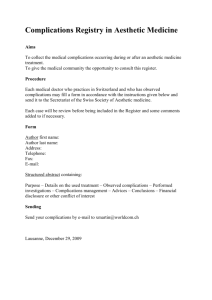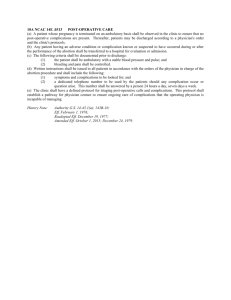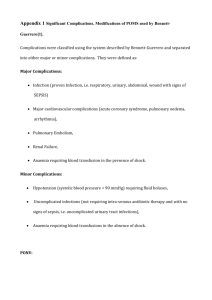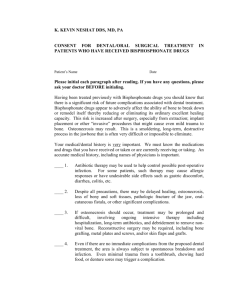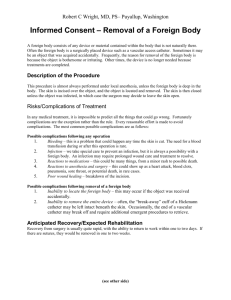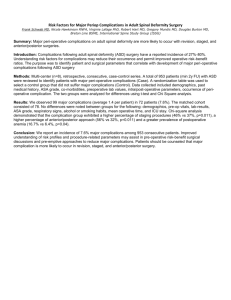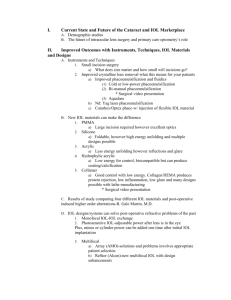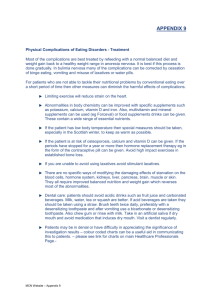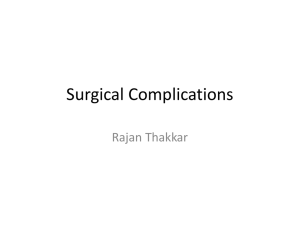COMPLICATIONS OF ANAESTHTIC PROCEDURE IN
advertisement
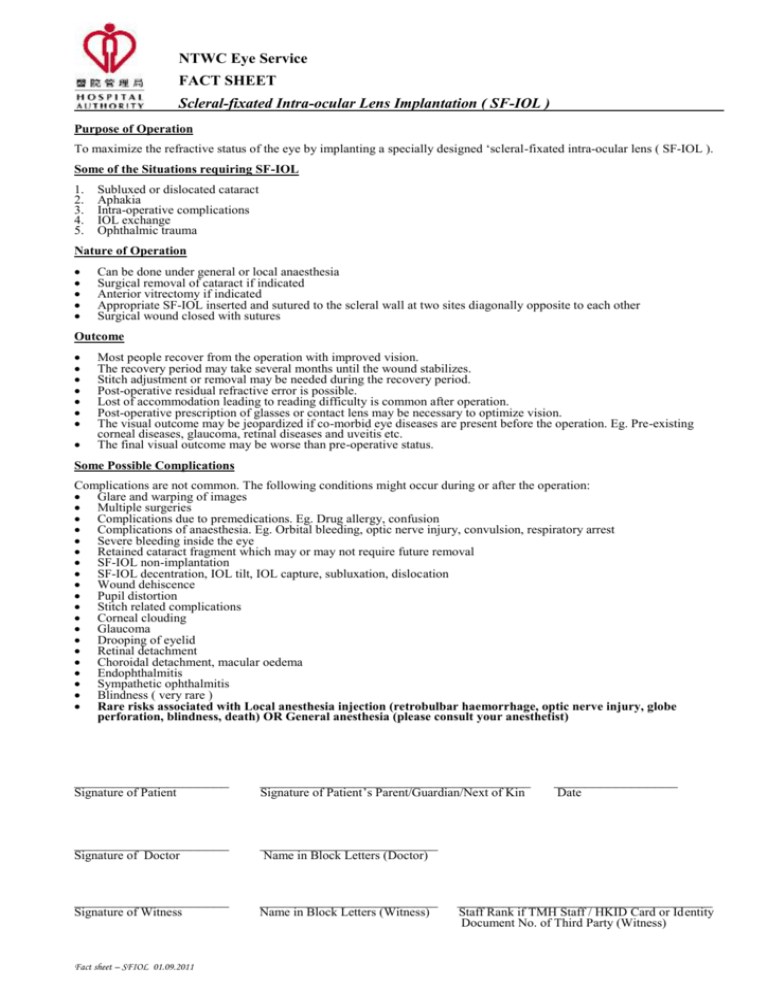
NTWC Eye Service FACT SHEET Scleral-fixated Intra-ocular Lens Implantation ( SF-IOL ) Purpose of Operation To maximize the refractive status of the eye by implanting a specially designed ‘scleral-fixated intra-ocular lens ( SF-IOL ). Some of the Situations requiring SF-IOL 1. 2. 3. 4. 5. Subluxed or dislocated cataract Aphakia Intra-operative complications IOL exchange Ophthalmic trauma Nature of Operation Can be done under general or local anaesthesia Surgical removal of cataract if indicated Anterior vitrectomy if indicated Appropriate SF-IOL inserted and sutured to the scleral wall at two sites diagonally opposite to each other Surgical wound closed with sutures Outcome Most people recover from the operation with improved vision. The recovery period may take several months until the wound stabilizes. Stitch adjustment or removal may be needed during the recovery period. Post-operative residual refractive error is possible. Lost of accommodation leading to reading difficulty is common after operation. Post-operative prescription of glasses or contact lens may be necessary to optimize vision. The visual outcome may be jeopardized if co-morbid eye diseases are present before the operation. Eg. Pre-existing corneal diseases, glaucoma, retinal diseases and uveitis etc. The final visual outcome may be worse than pre-operative status. Some Possible Complications Complications are not common. The following conditions might occur during or after the operation: Glare and warping of images Multiple surgeries Complications due to premedications. Eg. Drug allergy, confusion Complications of anaesthesia. Eg. Orbital bleeding, optic nerve injury, convulsion, respiratory arrest Severe bleeding inside the eye Retained cataract fragment which may or may not require future removal SF-IOL non-implantation SF-IOL decentration, IOL tilt, IOL capture, subluxation, dislocation Wound dehiscence Pupil distortion Stitch related complications Corneal clouding Glaucoma Drooping of eyelid Retinal detachment Choroidal detachment, macular oedema Endophthalmitis Sympathetic ophthalmitis Blindness ( very rare ) Rare risks associated with Local anesthesia injection (retrobulbar haemorrhage, optic nerve injury, globe perforation, blindness, death) OR General anesthesia (please consult your anesthetist) ____________________ ___________________________________ ________________ Signature of Patient Signature of Patient’s Parent/Guardian/Next of Kin Date ____________________ _______________________ Signature of Doctor Name in Block Letters (Doctor) ____________________ _______________________ _________________________________ Signature of Witness Name in Block Letters (Witness) Staff Rank if TMH Staff / HKID Card or Identity Document No. of Third Party (Witness) Fact sheet – SFIOL 01.09.2011
